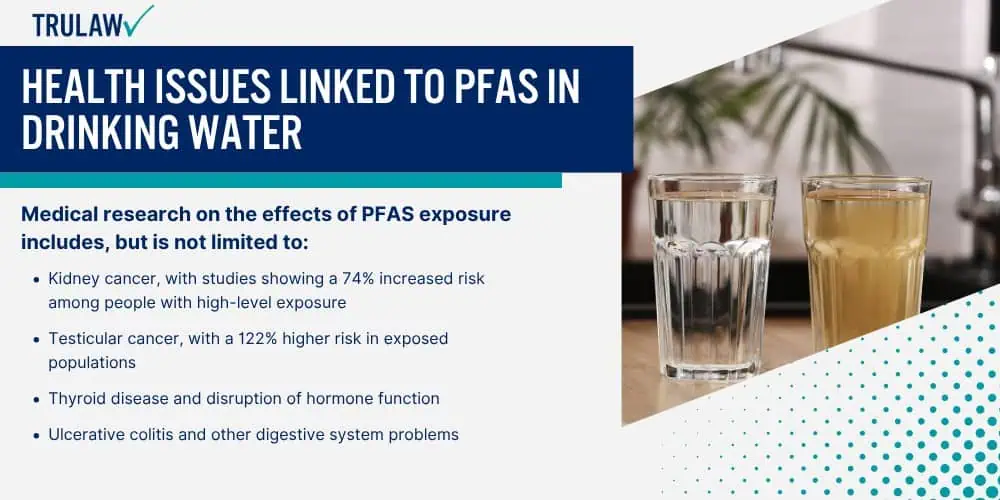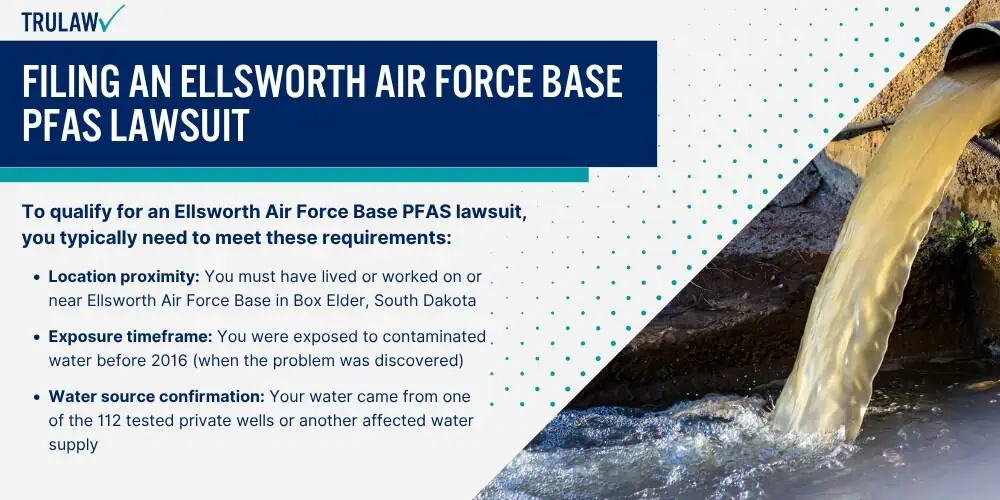Per- and polyfluoroalkyl substances (PFAS) in drinking water pose a growing public health concern as scientists uncover more about their widespread presence and harmful effects.
These synthetic chemicals, often called “forever chemicals” because they don’t break down in the environment, have contaminated water systems across the United States.

The Environmental Protection Agency has identified PFAS in water supplies serving an estimated 143 million Americans, with exposure happening through everyday activities like drinking tap water.
Kidney Cancer and Other Serious PFAS-Related Conditions
Scientific research has established links between PFAS exposure and several serious health conditions, with kidney cancer showing particularly strong associations in multiple studies.
Medical research on the effects of PFAS exposure includes, but is not limited to:
- Kidney cancer, with studies showing a 74% increased risk among people with high-level exposure
- Testicular cancer, with a 122% higher risk in exposed populations
- Thyroid disease and disruption of hormone function
- Ulcerative colitis and other digestive system problems
- Elevated cholesterol levels that may increase heart disease risk
- Pregnancy-induced hypertension and pre-eclampsia
- Weakened immune response, including reduced vaccine effectiveness
The National Cancer Institute has confirmed that higher blood levels of perfluorooctanoate (PFOA), one of the most common PFAS compounds, correlate with increased kidney cancer risk.
In 2024, the Department of Veterans Affairs announced a review of medical evidence to possibly make kidney cancer a presumptive condition for veterans exposed to PFAS, acknowledging the strong scientific foundation for this connection.
Local Communities Affected by Ellsworth PFAS Contamination
Residents near Ellsworth Air Force Base in South Dakota face some of the nation’s highest PFAS contamination levels, with far-reaching impacts on local water supplies and public health.
The contamination situation in Box Elder and surrounding areas includes:
- Groundwater PFAS levels reaching 551,000 parts per trillion, among the highest recorded at any U.S. military site
- Contamination first discovered in 2016, though the toxic firefighting foam had been used for decades prior
- 112 private drinking wells tested, with 22 showing PFAS levels above EPA health advisory limits
- 91 residents provided with alternative drinking water sources by the Air Force
- Contamination extending beyond base boundaries into nearby Box Elder and other communities
- A planned water system to provide clean water to affected residents at no cost
The primary source of contamination was aqueous film-forming foam (AFFF), used for decades in firefighting training at the base.
This foam contained high concentrations of PFAS that seeped into groundwater and migrated off-base.
Many residents consumed contaminated water for years before learning of the health risks.
Local veterans who served at Ellsworth have joined lawsuits seeking damages for health problems potentially related to PFAS exposure.
Their legal claims note that service members were never warned about possible health hazards while working with or near these chemicals.






